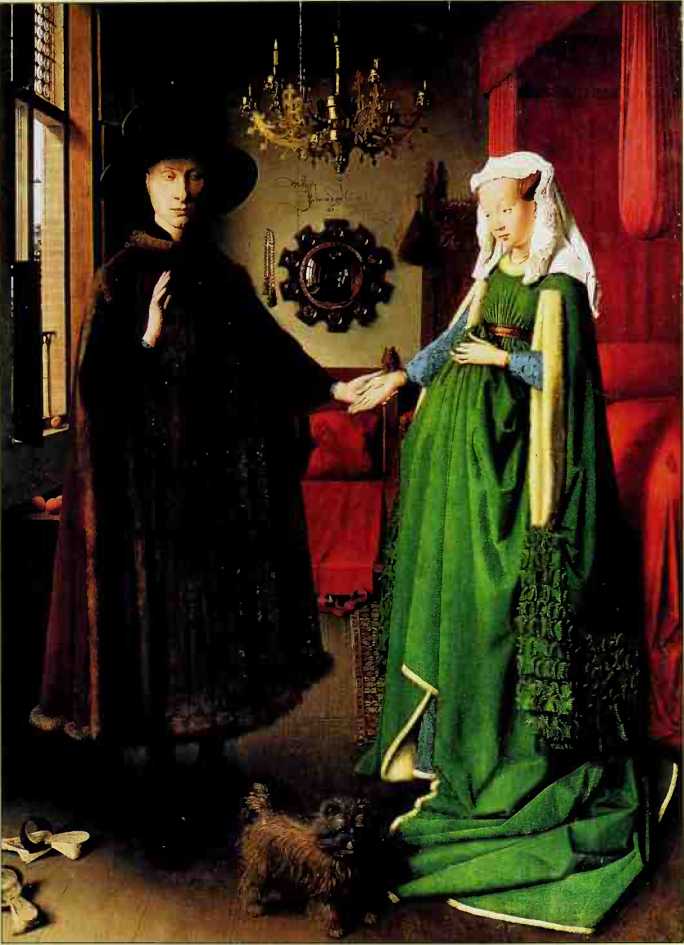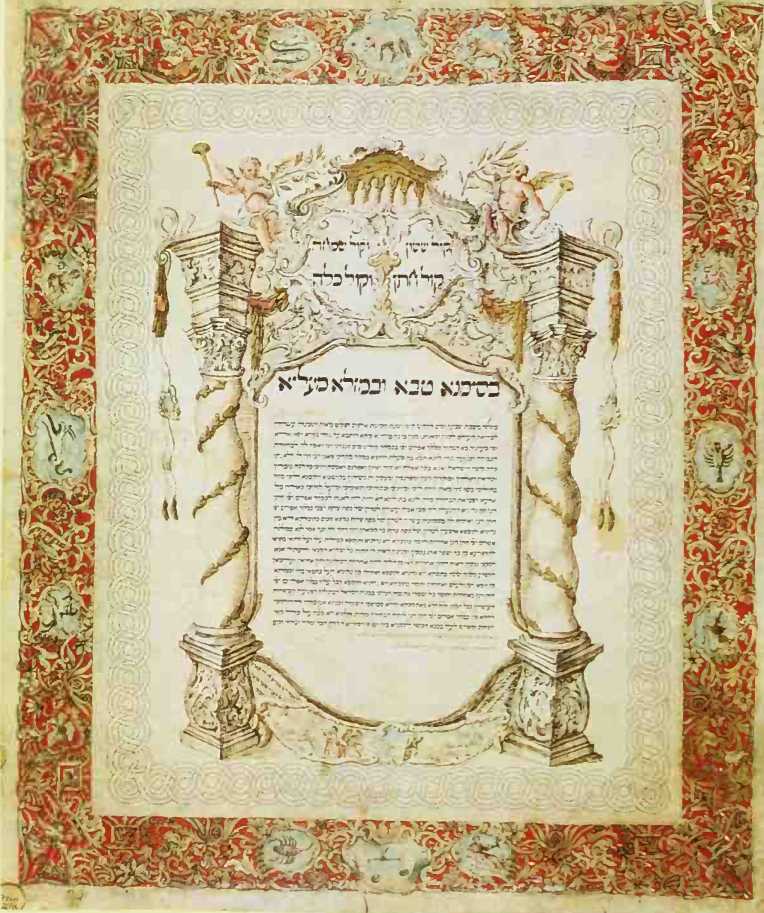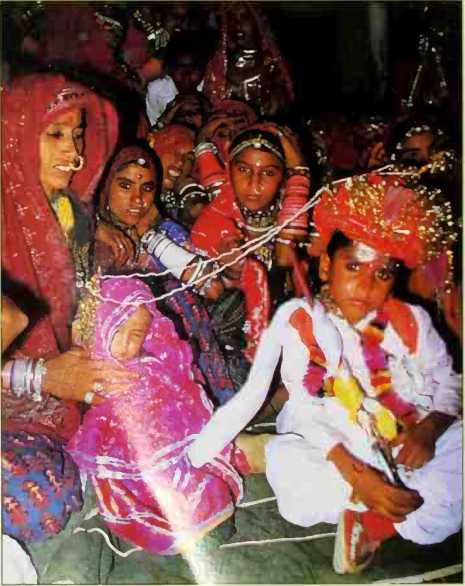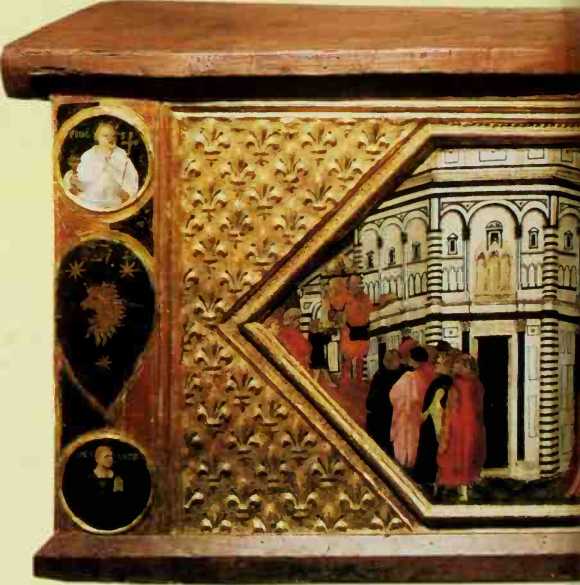
In 1434, the Italian merchant Giovanni Ar-nolfini posed with his bride, Giovanna Ce-nami, for the Flemish painter Jan van Eyck. In the painting that van Eyck created (above), every detail—the placement of the newlyweds' hands, their unshod feet, the witnesses, who are visible only in the mirror—documents some aspect of the ceremony by which the couple were united and
Acquired a new status in their society.
Primarily, marriage is an institution for the creation of an identifiable family unit for procreation and inheritance, for the forging of alliances between clans, and for the pooling or exchange of land and other forms of wealth. Communities have felt that romance and passion were of little significance, and throughout history, most societies have considered marriage far too important an agreement to be left to the individuals. In Chaldea during the third millennium BC, brides and grooms came before the magistrates to record their mutual contract on clay tablets; a variety of other traditions concerning betrothal and the wedding ceremony Itself are illustrated on the following pages.

Flowers, symbols of the zodiac, and Biblical figures adorn a Jewish marriage contract drawn up in Modena, Italy, on Friday, October 1, 1557. Signed by the prospective groom in front of witnesses, this document—still an essential part of Jewish wedding ritual—sets out the responsibilities and obligations of the new husband.
He ceremony of betrothal—the ritual confirmation of a couple's decision to marry—has often been performed with as great a degree of solemnity as the nuptials themselves. In some parts of ancient China, for instance, even the death of one of the partners before the wedding took place did not release the unfortunate survivor from his or her vows. In many cultures the engagement was—and still is—made not by the couple themselves but by the parents, acting on behalf of their juvenile offspring or even for those yet unborn. And the prospective husbands—or, in some societies, hopeful brides—frequently have had to prove the seriousness of their intentions in a number of ways that have satisfied their communities: by exchanging gifts as tokens of their commitment, by performing a series of specific tasks in their future in-laws' fields or households, by accumulating supplies of bedding or kitchen utensils with which to furnish their future homes, or by purchasing their new mates with precisely calculated payments in cash or kind.

To symbolize the betrothal of two Hindu children— which, according to tradition, may take place years before they are old enough to consummate the match—a consecrated cord links their flower-bedecked heads. Prayers and days of lavish feasting mark this early step on the road to matrimony.





 World History
World History









